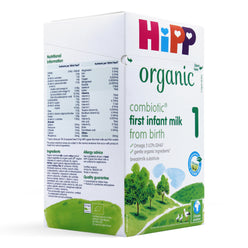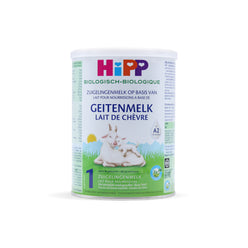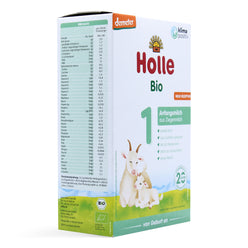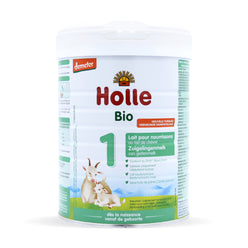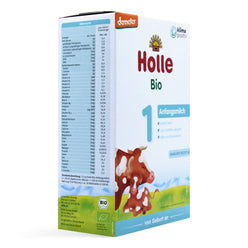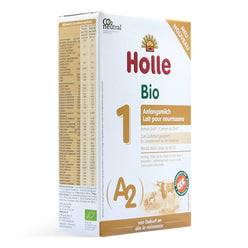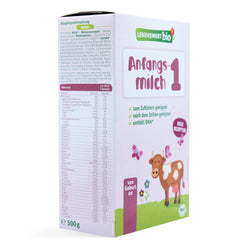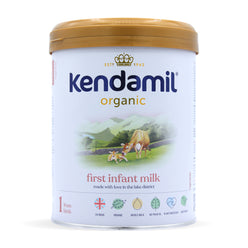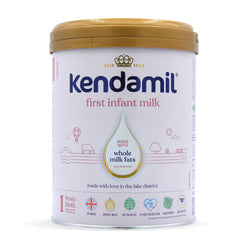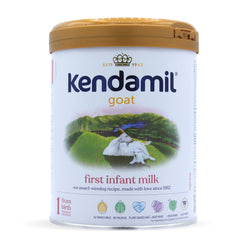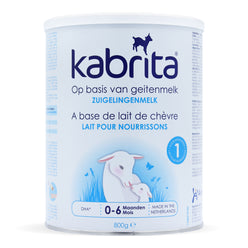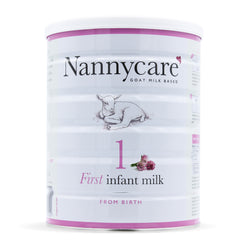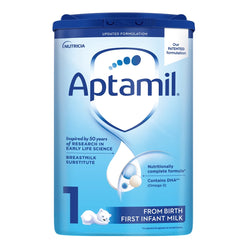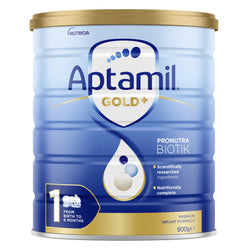Why Are Orange Crystals Formed In Infant Formula
48 hours of research6 minute read

A mother’s breast milk is considered the safest and healthiest source of milk for the baby. However, not every woman is able to express their milk properly after giving birth and prefer to use a milk formula for their baby instead. Milk formulas have developed over time, and improvements have been made to produce a formulation that most closely resembles natural breast milk. This is because baby formula is not only light on a baby’s digestive system, but also parents have a higher chance of their baby accepting formula than some breast milks. Milk formula is not always given alone and may also be accompanied by breastfeeding.
Some parents report the presence of orange crystals in infant formula milk. Understandably, this can be a great source of worry for parents, as they do not want to give their babies something they are not 100% comfortable with. The brown orangish tinge of a milk powder is often believed to be due to its deterioration, moisture exposure, or improper storage. This article explores the common reasons why crystals can form in infant formula and how this may affect the prepared milk.
Baby Formula Milk Crystals
This is a close up picture of an orange colored crystal commonly found in some baby formulas. This type of crystal is formed during the heating and dehydration process of formula manufacturing and, while a surprising find, should be of no cause for alarm to parents.

1. Reasons why crystals may form in milk?
- High heat during the milk dehydration and manufacturing process can cause some crystals to form. This is the most common reason for milk crystal formation, and a crystal formed from heat is typically darker shades.
- Sometimes milk crystals can form due to a slightly elevated level of moisture which was present during the manufacturing process. Crystals from moisture would typically take on a lighter color which resembles the natural color of baby formula.
- Storage of milk powder significantly beyond its expiry date can cause crystals. However - as long as your formula is within the expiration date listed on the packaging, milk crystals should not be any reason for alarm.
2. What is the impact of crystals in milk?
The orange specs formed in a baby formula are harmless to humans and may only have a slight effect on the solubility of the powder in water. Given enough time and mixing effort, milk crystals will dissolve with prolonged and vigorous mixing.
3. Are milk crystals safe?
Admittedly, milk crystals can be visually jarring when found in a baby formula. However, the process through which these crystals form is completely natural and scientifically understood. Most milk crystals will dissolve naturally over time, but even the ones that don't dissolve are in no way harmful.
What Causes Crystals To Form In Infant Formula?
There are several factors that may play a role in the formation of orange crystals in formula milk. First, when the formula milk powder is manufactured, it must be converted from a liquid to a powder form. This process usually involves a heating process. During this process, if the powder gets mildly overheated due to a higher temperature or extended heating period, it may appear orange or brownish. These may also be referred to as scorched particles. To confirm the appearance of the scorched particles of the milk powder, parents can try squeezing them against a hard surface with the back of their nail or a flat knife's edge. If the orange crystals turn into powder, it confirms their presence. Note that some crystals are harder than others and may require a bit more effort - but still this is no cause for alarm. Some parents also test these crystals by dropping them into hot water. After some time in water, the crystal will naturally soften, sometimes dissolving entirely. If it does not dissolve on its own after soaking in hot water for 15-20 minutes, try squeezing the crystal with bare hands to see if it disintegrates. Note that this is only a test for crystals, and once you place your hands in a formula you should not feed this to your baby. However - all of these tests can help confirm that it is indeed a crystal, which is just an overheated particle of milk powder and nothing that could cause harm to the baby.
How are milk crystals formed?
We must first understand the Milliard reaction to understand how these particles are formed in more detail. The Millard reaction, also known as nonenzymatic glycation, is a chemical reaction between the carbonyl group and amino group present in the formula milk. This reaction may either occur during the formula milk processing - as mentioned above or, in some instances, it may also occur during its storage. The formation of different stages of crystals by the Millard reaction has been studied in a number of studies as more concern about the orange crystals in milk powders started to arise over the years. A series of steps through which the Millard reaction proceeds lead to the formation of melanoidins. Melanoidins are the compounds that cause the milk powder to change its color to orange or brown over time. (3)
Floating Milk Crystals
In some cases, darker colored milk crystals may not fully disintegrate when mixing and may appear in a baby formula as floating dark particles. Specifically, these crystals float because they are less dense than the surrounding formula. While it can be unpleasant or surprising to find these, they are no cause for alarm and are in no way harmful. You can simply remove these with a clean spoon and proceed with feeding as usual.

Other Factors That May Play A Role
Other factors which may play a role in the formation of orange crystals in the milk powder include the incorporation of moisture, aging of the formula, improper storage, and contamination of the formula milk during manufacturing - however, the latter is highly rare. Contamination with substances that promote the darkening of the milk powder includes iron, copper, and polyphenols. When present in higher concentrations, these substances can accelerate the darkening of formula milk when stored over long periods. The darkening of the milk is usually accompanied by an increased uptake of oxygen and a higher production of carbohydrates. The formation of crystals may also affect the solubility of the milk formula, which may not dissolve as properly in water. (4)
A Friendly Note About Contaminants: all formulas are extensively tested by highly regulated 3rd parties in Europe. With each manufactured batch, if any contaminants were found in formula it would not pass inspection and ultimately would not be distributed for sale. The details provided above are for full transparency as to all possible causes of particles in formula, however no European formula manufacturer has ever had any recalls as a result of formula containing contaminants. However, we have definitely seen cases where a foreign object has fallen in to formula inside of someone's house, such as large dirt or dust specs. These can fall in from a cupboard above an open formula container, for example. Always promptly close and seal your formula so as to reduce the risk of household contaminants from falling in to an open formula container.
Milk Crystal Colors
Milk crystals vary in color depending on the location of where the milk was in relation to the original heat source during the manufacturing process. While only a very small portion of milk may be impacted by the Milliard reaction in any given batch, the milk closest to the heat source will experience the greatest chances of crystallizing. Although none of the milk crystals should be cause for concern, parents may find some respite in becoming familiar with these different crystal colors and what they mean.
Light Yellow Colored Milk Crystals
This type of crystal is formed during the manufacturing process when a comparatively higher than average level of moisture is present within a batch of milk and the surrounding environment of the dehydration chamber. Light colored crystals should not cause any reason for concern. These types of crystals are the most water soluble and most will naturally disappear during regular mixing.

Medium Orange Colored Milk Crystals
Medium darkness crystals, often more orangish in color, are the result of slightly prolonged milk exposure to heat. Same as with light colored milk crystals, these crystals are of no harm and should not cause alarm for parents. Orange colored crystals remain water soluble, although they may require a bit more vigorous shaking to fully dissolve.

Dark Brown or Black Colored Milk Crystals
The darkest colored milk crystals are deep brown or nearly black. Dark crystals can be thought of in a similar way to how caramel is a sweet sticky version of heated sugar (as a reminder - lactose in milk is a natural form of sugar). Sometimes confused as a foreign substance within formula, these darker crystals are visually more alarming but should be understood by parents as completely harmless and normal to find. The darker color comes from slightly longer heat exposure during the milk dehydration process - and it should also not be confused as burned milk. Chemically speaking, darker colored crystals are actually the sweetest in flavor - although this difference is minor to the human palette. Dark colored crystals take longer to dissolve, and sometimes may not fully dissolve without prolonged mixing and shaking. These crystals can be removed from a mixed formula if necessary.

Infant Formula And Its Importance
Whether a mother decides to breastfeed her baby or give them infant formula is her choice and may be influenced by her personal and health factors. Data shows that in the United States, only 38% of infants are breastfed. By the time they turn three months old, 67% of these infants start to rely on infant formulas. (1)
Since infant formulas are considered an alternative to breast milk, it is required to be almost identical to it for better acceptance by the newborn. However, the production of identical milk is impossible; most high-quality formulas are very similar to breast milk. The majority of infant formulas use cow or soy milk as the base. However, some are also made using goat milk. Since this milk usually lacks the consistency found in natural breast milk, it may be added separately to allow the formula milk to better match the human breast milk. These may include fat blends, iron, and combinations of nucleotides. The fatty acids which are most commonly incorporated are docosahexenoic acid and arachidonic acids. (2)
Best Infant Formulas to Introduce To Breast Milk Fed Babies
HiPP Dutch is popular infant formula that is known for its unique blend of probiotics and similarity to human breast milk. In addition, it includes the natural lactic acid cultures, which are well accepted by newborns developing digestive systems. Another benefit of this formula is that it does not contain any starch. Instead, the main carbohydrate incorporated in the formula is lactose, the primary carbohydrate of breast milk. It is also EU-certified and is made using a chemical-free agricultural process. HiPP Dutch is also free from all artificial sweeteners and GMOs, making it highly safe for the baby.
Check PriceHiPP UK stands out as a highly favored European formula brand. Operating with the care and dedication characteristic of a family business, HiPP has made remarkable efforts to create a nutritionally comprehensive meal replacement or a delightful meal supplement for mothers who opt for continued breastfeeding. This mild formula incorporates all the vital essential vitamins and minerals mandated by stringent EU organic baby formula regulations. It boasts a unique blend of organic nutrients, organic vegetable oils, organic cow's milk, organic lactose, and organic whey, setting it apart from equivalent formulas available in the United States.
Check PriceHiPP German is easy to digest and safe formula that may be introduced to babies from birth. It is a natural milk formula rich in probiotics required to support the baby’s digestive and immune systems. The main carbohydrate in HiPP German is lactose, also the primary carbohydrate in breast milk. To further support the baby’s development and immune system, the experts have also incorporated vitamin A, Vitamin C, and Vitamin D in the formula. Adequate quantities of vitamin D also aid in the baby’s bone development. The formula also contains high levels of Omega 3 and omega six fatty acids, which promote the growth of the infant’s brain and muscles. This formula is available in three stages known as the HiPP German Organic stage 1, stage 2, and stage 3. Each stage has a unique nutritional value, which is ideal for its recommended age group.
Check PriceApart from exclusively using European Union-certified organic ingredients, HiPP Dutch Goat formula distinguishes itself by instituting its own rigorous quality assurance measures, going beyond the conventional "organic baby formula" standard. This unwavering dedication guarantees that each phase of the production process aligns with the most elevated organic criteria, offering parents a reliable and superior choice for their baby's nutritional needs. HiPP Dutch Goat offers several key benefits. Firstly, it is easier to digest when compared to cow milk formulas, making it a suitable choice for infants. Additionally, this formula contains fewer allergens than traditional cow milk formulas, reducing the likelihood of allergic reactions.
Check PriceHolle Goat is a unique baby formula composed for babies. Since this formula is based on goat's milk, it is especially recommended for infants who cannot tolerate cow's milk or are allergic to it. It is considered an excellent alternative to cow milk formula and natural organic components like organic lactose, organic vegetable oils, maltodextrin, and organic goat's milk. This formula is particularly unique because it is considered vegetarian-friendly and is not heavily processed, unlike many other formulas in the market.
Check PriceHolle Goat Dutch is an organic infant formula created using goat milk as the base of the formula. Stage 1 of this formula is ideal for babies below the age of six months. This milk formula is known for its unique composition and includes abundant minerals, vitamins, and other essential nutrients required for the growing baby. This milk is highly safe for consumption because it is not only gluten- and soy-free but also GMO-free and sugar-free. It is completely organic and lacks any artificial flavoring or synthetic ingredients. If the parents prefer to continue using this formula after their baby turns six months, they may switch to the Holle goat dutch stage 2 formula. This formula is formulated for babies between 6 months and nine months. The Holle Goat Stage 2 and Holle Goat Stage 3 come in much larger packing as compared to the Holle Goat Stage 1, so the parents don’t have to worry about refilling their baby’s formulas every few days. Since goat milk is used as the base of the formula, it is also rich in the vitamins like vitamins a, c, and d. It also contains a high proportion of minerals like calcium.
Check PriceHolle Cow is a gentle infant milk formula that is completely organic and consists of nutrients to provide the baby with a balanced diet from the very start. The organic ingredients for which this milk formula is most commonly recommended include organic vegetable oils like organic palm oil. It also contains safe and high-quality skimmed milk, which adds vitamins and minerals. The minerals found in high levels in the Holle cow organic milk include vitamin A, Vitamin D, and Vitamin E. Its high safety profile and organic constituents allow it to be given as a replacement for breast milk. However, it is not only available for newborn babies, but older babies may also use it. Holle Cow comes in 5 stages: Stage PRE, Stage 1, Stage 2, Stage 3, and Stage 4.
Check PriceHolle cow A2 formula is a nutritionally complete formula that is Demeter (organic++) certified. It is manufactured from specially selected cows that only produce A2 protein. A strict DNA test is performed to select specific A2 cows. Holle A2 formula is available as stage 1, stage 2, and stage 3 and contains high-quality cow’s milk in its natural form. A2 milk has been designed to be easier to digest and healthier than other cow's milk on the market.
Check PriceLebenswert, established by Holle, offers a close resemblance to natural breast milk, providing clean, simple, and organic ingredients in their formulas. Achieving Bioland certification, Lebenswert ensures the use of 100% organic cow's skim milk from biodynamic pastures, where cows graze freely in fields free of pesticides, fertilizers, hormones, and antibiotics. Instead of corn syrup or synthetic sugar additions, organic lactose from cow's milk serves as the primary source of carbohydrates in this organic formula. While eliminating harmful artificial additives, Lebenswert makes sure that your baby gets all the vitamins and minerals needed for early-stage growth and development.
Check PriceKendamil Organic stands out as one of the most sought-after and highly acclaimed organic infant formulas, proudly originating from a family-run operation in the United Kingdom. Crafted with care, this formula uses EU-certified organic cow's whole milk sourced from Red Tractor-accredited farms as its wholesome base. With its commitment to quality and oversight, Kendamil works closely with British dairy farmers to ensure the finest and healthiest ingredients are packed into their passionately crafted organic formulas, available in three stages to meet your baby's evolving needs. Dedicated to mimicking natural breast milk, Kendamil uses full cream cow's milk and incorporates a natural fat source Milk Fat Globule Membrane (MFGM) for cognitive development.
Check PriceKendamil Classic stands as Kendamil's most popular and reliable go-to infant cow's milk formula for babies. This formula is carefully designed to replicate the whey:casein ratio found in natural breast milk, featuring an easily digestible 60:40 whey/casein blend. Kendamil sources its plant-based DHA from marine algae, making it a suitable option for vegetarian families. It also contains galacto-oligosaccharides from milk (3-GL's) and is entirely lactose-based, ensuring your baby gets the best nutrition. It excludes palm oil, sugar, corn syrup, maltodextrin, soy, starch, wheat, nuts, synthetic additives, preservatives, and GMOs, providing a natural and nourishing choice for your little one.
Check PriceKendamil Goat is one of the most favored goat formulas in Europe, by far. At the heart of its success lies the British family-owned goat pastures, adhering to Red Tractor certification, emphasizing animal welfare and conscious farming as integral to the manufacturing process. This formula is carefully crafted using 100% whole cream goat milk, making it the perfect choice for infants intolerant to cow's milk formulas. Kendamil Goat proudly features vegetarian-friendly plant-based DHA and ALA (Omega-3 and 6 LCPs) sourced from marine algae, avoiding the use of fish oil. With HMOs (Human Milk Oligosaccharides) akin to natural breast milk, Kendamil Goat is an all-natural, clean formula you can rely on for your baby's nourishment.
Check PriceKabrita Goat milk formula is suitable for babies with cow milk sensitivity, as it is based on high-quality goat milk. It is thoughtfully formulated to closely mirror the goodness of human breast milk, making it an ideal choice for your little one's nourishment. Although not certified organic, Kabrita adheres to wholesome farming practices, sourcing skimmed goat milk from the Netherlands to create a highly nutritious formula. Breaking free from the notion of a "goaty" taste and aroma often associated with goat milk, Kabrita assures parents that its baby formulas offer a mild taste. This is achieved by using fresh Dutch goat milk and an efficient production process.
Check PriceNannycare stands out for its commitment to using only the cleanest and ethically sourced ingredients in their baby formulas. By using 100% full cream premium New Zealand goat milk as the foundation for their formulas, Nannycare ensures a high standard of nutrition for babies while also being easier to digest than cow milk formulas. Formulated with Inositol, Choline, and all-natural Amino Acids, this exceptional formula is designed to reduce the likelihood of indigestion, gas, and constipation, providing a gentle and easy-to-digest alternative to comparable cow's milk formulas.
Check PriceAptamil Nutribiotik is suitable for infants from birth through 6 months as a complete substitute to breast milk, or from birth through 1 year of age if substituted with additional meals. It features a patented mix of natural prebiotics that support the growth of beneficial gut bacteria. Scientific oligosaccharides promote Bifidobacteria and Lactobacilli while inhibiting harmful bacteria. A balanced gut is vital for your baby’s digestion and immunity as they grow.
Check PriceAptamil Gold+ is a carefully crafted cow's milk formula, free from GMOs. It's designed to match growing infant nutritional needs. Packed with probiotics, prebiotics, and crucial DHA, this advanced blend supports your baby's overall health. DHA aids brain and eye growth, and GOS promotes a balanced gut for digestion.
Check PriceOrange Specs In Formula
Since infant formula is a major source of nutrition for a growing baby, any anomalies in a formula can be a source of great concern for new parents. Crystals can form as the result of natural heating processes during which milk is dehydrated, but these crystals should not be of any concern to parents. All formulas go through rigorous testing prior to being allowed for distribution and sale in Europe, and milk crystals are not a reason why baby formula would fail to meet the expectations of European food testing. With enough time and mixing, most crystals will naturally dissolve. Any remaining crystal particles can be removed with a spoon and the formula can be fed as usual.
Most Popular Baby Formulas
References
- Stuebe A. (2009). The risks of not breastfeeding for mothers and infants. Reviews in obstetrics & gynaecology, 2(4), 222–231.
- Institute of Medicine (US) Committee on the Evaluation of the Addition of Ingredients New to Infant Formula. Infant Formula: Evaluating the Safety of New Ingredients. Washington (DC): National Academies Press (US); 2004. 3, Comparing Infant Formulas with Human Milk. Available from: https://www.ncbi.nlm.nih.gov/books/NBK215837/
- Xiang, J., Liu, F., Wang, B., Chen, L., Liu, W., & Tan, S. (2021). A Literature Review on Maillard Reaction Based on Milk Proteins and Carbohydrates in Food and Pharmaceutical Products: Advantages, Disadvantages, and Avoidance Strategies. Foods (Basel, Switzerland), 10(9), 1998. https://doi.org/10.3390/foods10091998
- Cesa, S., Casadei, M. A., Cerreto, F., & Paolicelli, P. (2015). Infant Milk Formulas: Effect of Storage Conditions on the Stability of Powdered Products towards Autoxidation. Foods (Basel, Switzerland), 4(3), 487–500. https://doi.org/10.3390/foods4030487



